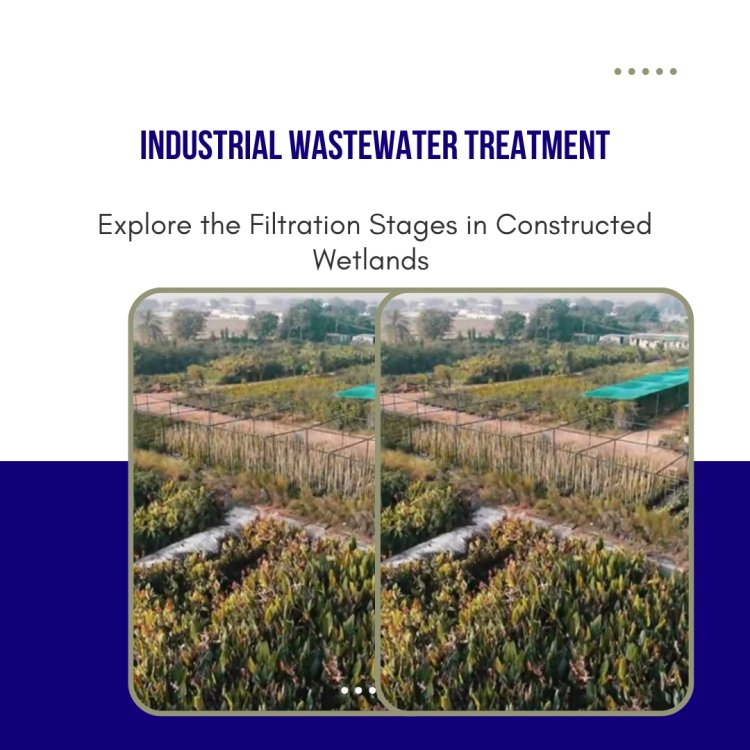Exploring the Filtration Stages in Constructed Wetlands for Industrial Wastewater Treatment
Discover the key filtration stages involved in treating industrial wastewater using constructed wetlands.
Share this Post to earn Money ( Upto ₹100 per 1000 Views )

Discover the key filtration stages involved in treating industrial wastewater using constructed wetlands. From preliminary treatment to final polishing, explore how these stages effectively clean wastewater, offering an eco-friendly solution to industry-specific effluent treatment challenges.

Constructed wetlands have emerged as a cost-effective solution, especially for treating the colossal volumes of wastewater generated by industries. In India alone, approximately 13,500 million liters per day (mld) of wastewater is produced annually, emphasizing the significance of adopting biological effluent treatment plants.
One of their primary advantages lies in their ability to function without the need for extensive infrastructure, unlike conventional STPs, thereby addressing concerns related to aging infrastructure and controlled environments.
This article delves into the distinct filtration stages integral to treating industrial wastewater within constructed wetlands.
Preliminary Treatment:
The initial treatment phase prioritizes addressing the varied quality, volume, and type of waste generated by different industries. It focuses on removing larger debris, solids, and coarse particles from incoming wastewater. Regardless of whether the waste contains metals, chemicals, or biological components, screens and settling tanks play a pivotal role in filtering out these materials. This step aims to prevent clogging or interference with subsequent treatment stages.
Primary Treatment:
Following the removal of larger particles, the wastewater undergoes primary treatment. This stage involves the gravitational settling of suspended solids and sediments. By harnessing gravitational forces, these solids settle at the bottom of the treatment unit, facilitating the separation process.
Biological Treatment:
The essence of constructed wetlands lies in their biological treatment phase. Here, wastewater traverses through planted areas strategically selected based on the evaluation of waste releases. This selection ensures that vegetation, roots, and microorganisms present in the soil and on plant surfaces aid in breaking down organic matter and nutrients. Through microbial action, organic pollutants are decomposed, transforming them into less harmful substances.
Final Polishing/Tertiary Treatment:
Following biological treatment, the wastewater might undergo a final polishing stage. This phase aims to further elevate water quality by eliminating any residual suspended solids or contaminants. It often involves additional filtration or settling processes to meet stringent water quality standards.
Each filtration stage within a constructed wetland contributes significantly to wastewater treatment. By harnessing natural processes involving plants, soil, and microorganisms, these systems efficiently cleanse wastewater before its reintroduction into the environment. This sustainable and eco-friendly approach to industrial wastewater treatment showcases the efficacy of constructed wetlands in addressing industry-specific effluent treatment challenges.






